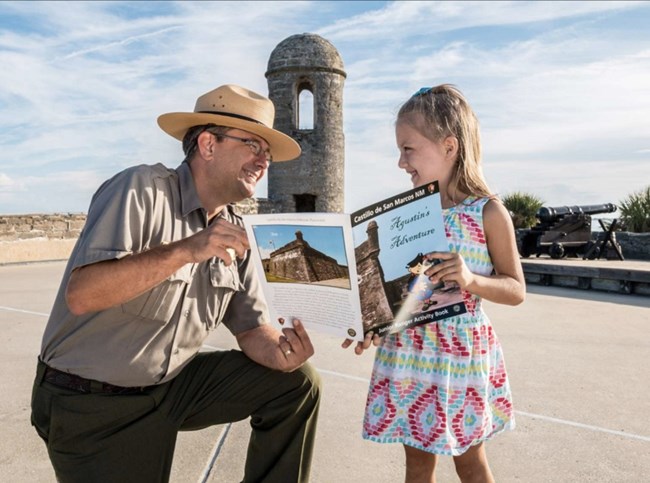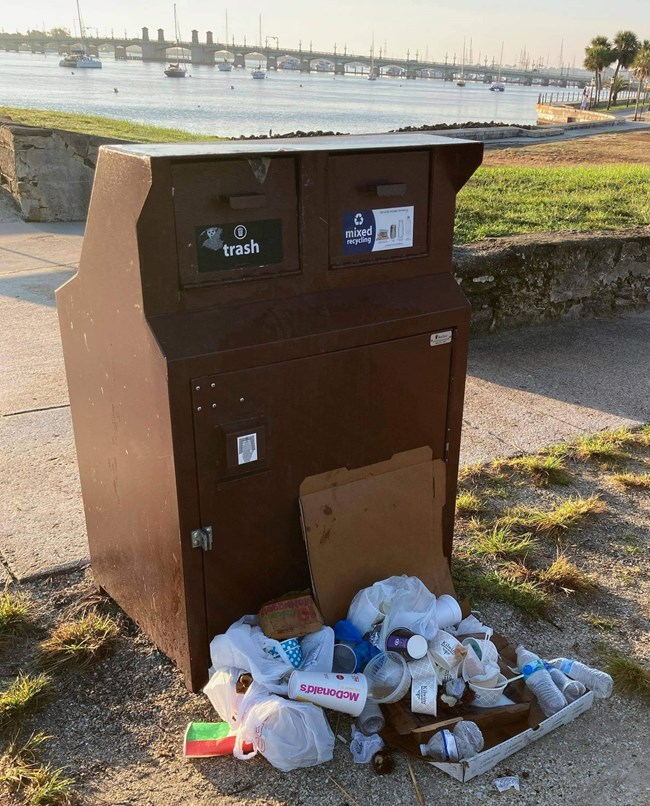Last updated: January 4, 2021
Article
Sustainability

What is Sustainability?
Sustainability is the day to day relationship between people and the way we live and the natural environment that surrounds us. How are we affecting the environment by our use of natural resources? Awareness is the first step towards preserving a healthy balance between a planet (plants, animals, and their ecosystems) and the people and communities that live on earth. Examples of sustainability include: reducing waste, reusing materials, and recycling materials that can no longer be used.
Test Your Knowledge!
Some resources are renewable which means that with time, nature can make more. Some resources are non-renewable meaning once they are gone, it would take millions of years to replace.
Look at the list below and see if you can figure out which are renewable and which are not. Click on them to check your answer.
Even though forests, wildlife, and water are renewable resources, scientists have recorded that the rate at which humans are converting wildlife habitats for their own uses has led to the mass extinction of plants and animals on a global scale. Conservation of land and water can help address this problem. There are many individuals and organizations, including the National Park Service, working to protect and restore land, water, and species.
HOW LONG WILL IT TAKE FOR THESE ITEMS TO DECOMPOSE? SLIDE TO THE RIGHT TO CHECK YOUR ANSWERS.
Left image
List of natural and manmade items.
Right image
Slide to answer: Amount of time it takes to break down materials.

Ask a Ranger!
How will you apply your knowledge of renewable versus non-renewable resources? Now that you know how long it takes for trash to breakdown, will you make any different decisions? If you're in a park, ask a ranger about their decisions and what their park is doing to help with sustainability. If you're not able to visit a park right now, keep exploring this page to learn more about what you can do in parks and at home to help.
Sustainability in National Parks
Green Parks Plan
Since 1916, the National Park Service has been a world leader in protecting natural and cultural resources. Through the Green Parks Plan (GPP), the Service strives to extend that leadership to the sustainable management of our facilities.
- Meet and exceed the requirements of all applicable environmental laws and adopt sustainable best practices in all facility operations.
- Reduce greenhouse gas emissions and adapt facilities at risk from climate change.
- Improve facility energy performance and increase reliance on renewable energy.
- Improve facility water use efficiency.
- Transform our fleet and adopt greener transportation methods.
- Purchase environmentally friendly products and increase waste diversion and recycling.
- Promote healthy outdoor experiences and minimize the impact of facility operations on the environment.
- Incorporate sustainability initiatives into new and existing partnerships.
- Engage visitors about sustainability and invite their participation.
- Enhance the sustainability of our landscapes.

Become a Junior Ranger
Learn more about Castillo de San Marcos National Monument and become a Junior Ranger. You'll earn a badge upon completion of an activity book and after reciting a pledge with a Park Ranger. The pledge is a promise to help preserve our national treasures. Rangers at Castillo made that promise too.

Reusable Water Bottles and Water Refill Stations
Many National Parks have installed water refill stations to encourage visitors to use reusable water bottles instead of bottled water. If you do have to use bottled water, please remember you can reuse and recycle the plastic bottle when you're finished.

Reusable Bags
Reusable bags and refillable water bottles help reduce the amount of trash that winds up in parks and in the ocean. By doing this, you also help decrease the greenhouse gas emissions associated with the production, filling, packaging, and transport of disposable water containers.
You can purchase refillable water bottles in the Park Store, and fill them up at the free filling station located near the fort's restroom area. The Park Store has also stopped offering plastic bags, and instead offers reusable bags.

Leave No Trace
"Take only memories and pictures, leave only footprints." While trash and recycle bins are located on the park grounds, consider taking everything you brought into the park with you when you leave. After the fort's interior closes at 5:15 PM and staff goes home, sometimes visitors exploring the exterior of the fort leave their overflow trash outside the trash bins. Animals and the wind can scatter this garbage around the park, and sometimes it even ends up in the water.
If you are planning a picnic at the park, you can make your picnic environmentally friendly by remembering the three R's: Reduce, Reuse, and Recycle.

Reduce: If we plan accordingly, we can bring only what we need for the day, and take leftovers home rather than throwing them in the garbage.
Reuse: Reusable picnic supplies are an excellent way to help sustain our planet. Some ideas include:
-Pack your food in reusable containers.
-Pack reusable plates and eating utensils instead of paper and plastic disposables.
-Use a thermos for your beverages rather than single-use containers.
Recycle: If you are unable to bring food or beverages in reusable containers, these goods often come in packaging that can be recycled and made into another product at a later time.
Sustainability at Home
For generations, people have practiced “sustainability” or made “green” choices, they just didn’t always use these words to describe their actions. Ask your parents or grandparents, how they saved money or time by reusing or preserving their resources.
Walk around your home and see if there are ways you can save energy and help the environment. Are you looking for ideas? Consider some of these:
- Use alternative forms of transportation – Carpool, use public transportation, walk, or ride your bike.
- Recycle - Many cities now offer recycling waste pick-up at your home or have a drop-off recycling center. Consider donating your used goods or shopping at donation centers with secondhand items.
- Buy local - Buy local goods and services that minimize emissions associated with transportation.
- Shop smart - Buy products that use less packaging or use recyclable materials.
- Turn off electronics - Reduce our (indirect) use of fossil fuels by turning off unneeded lights, electronics, air conditioning, etc.
- Drink your own water- Bottled water is expensive, and experts say it's not always cleaner than tap water. Use a reusable water bottle and fill up from the tap.
- Plant a garden or tree - Nature has its own way of taking away carbon through the growth of trees.
- Clean "green" - Many natural products can replace commercial, chemical products. Try using baking soda or vinegar. The Internet has lots of ways to use these for safe cleaning.
- Talk to your family and friends - Chances are your friends or family may be looking for guidance or advice on how to make sustainable choices. Lead by example and offer your support.

Join Us
Over the next century, the NPS is committed to advancing the sustainability of park operations and engaging visitors to promote sustainability inside and outside parks. To achieve and surpass these goals, we must challenge ourselves to view all our activities through a lens of sustainability and take advantage of green opportunities whenever possible.
Will you join us? What are some other ways we can be agents of change in these efforts?
